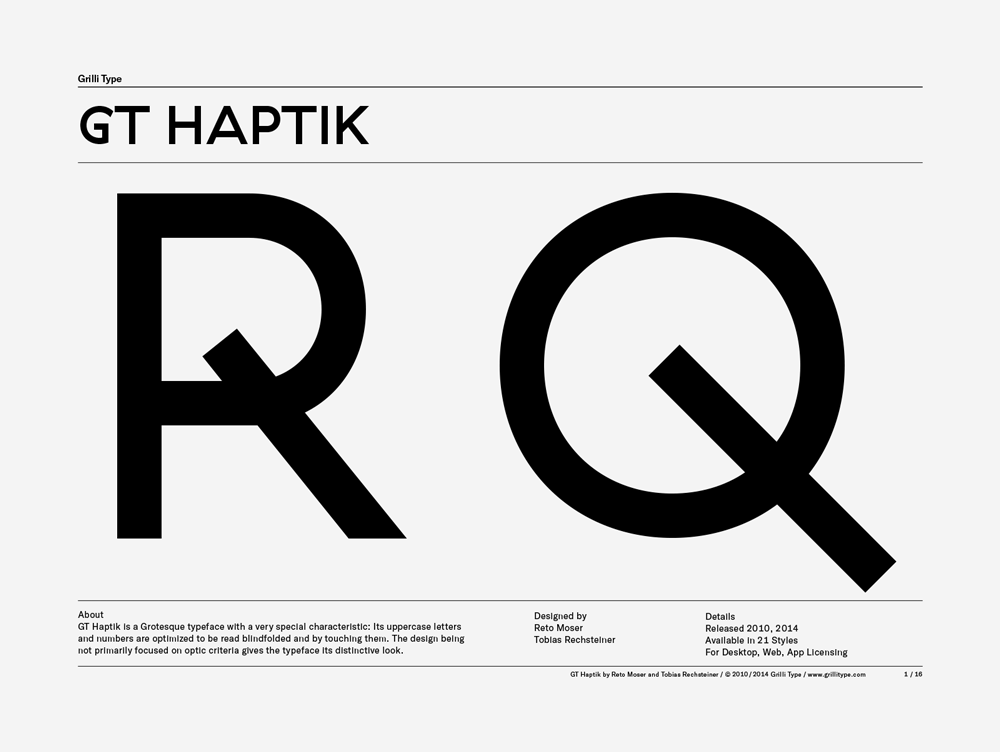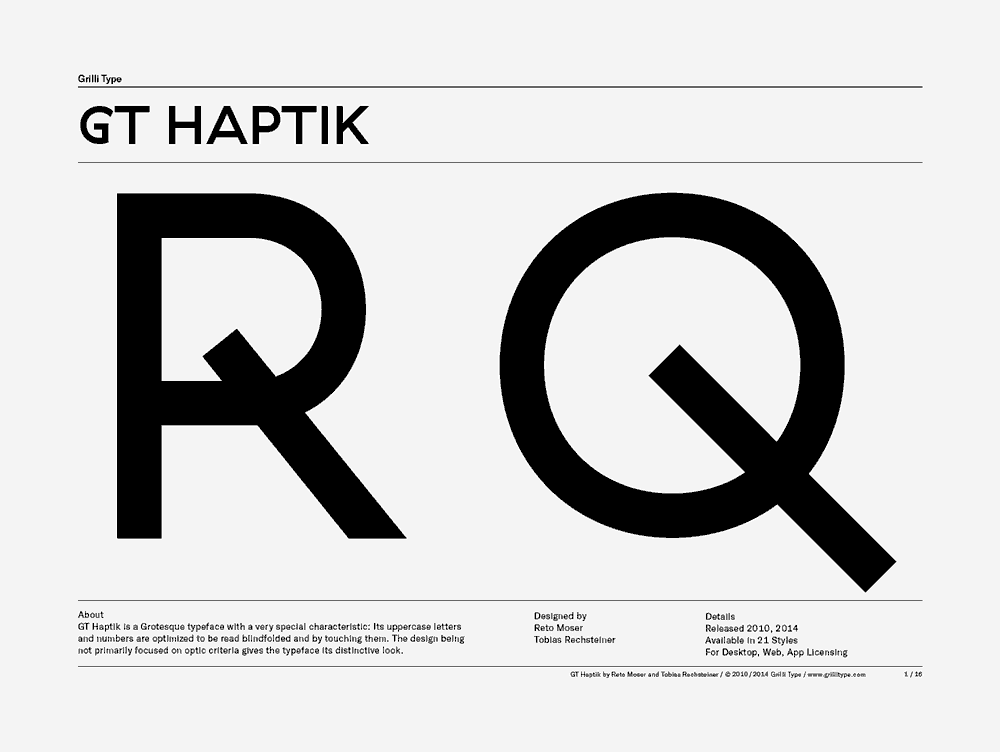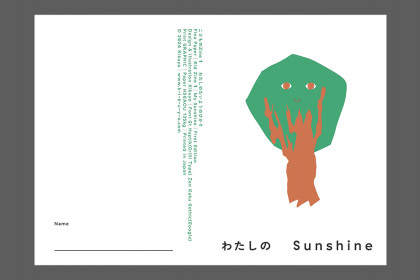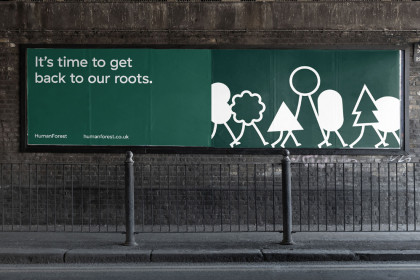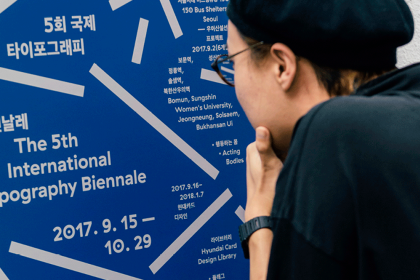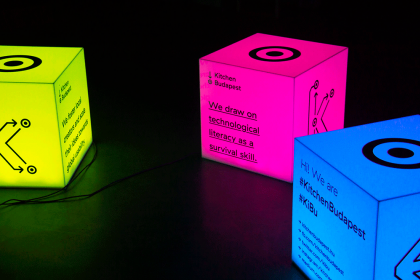GT Haptik
Family overview
- Lazer Oblique Rotalic
- Thin Oblique Rotalic
- Light Oblique Rotalic
- Regular Oblique Rotalic
- Medium Oblique Rotalic
- Bold Oblique Rotalic
- Black Oblique Rotalic
- LazerYou know let me bust the funky lyrics u can’t touch this
- Lazer ObliqueDance to this and you’re gonna get thinnerFresh new kicks and pants
- Lazer RotalicLa Trahison des Images (Ceci N’est pas une Pipe), 1928–29 by Rene Magritte
- ThinWhile it’s rollin’ hold on pump a little bit
- Thin ObliqueWhy you standing there man u can’t touch this
- Thin RotalicYou got it like that now you know you wanna dance
- LightLa Trahison des Images (Ceci N’est pas une Pipe), 1928–29 by Rene Magritte
- Light ObliqueWhistler’s Mother, 1871, by James McNeill Whistler
- Light RotalicThe Kiss, 1908, by Gustav Klimt
- RegularLa Trahison des Images (Ceci N’est pas une Pipe), 1928–29 by Rene Magritte
- Regular ObliqueLas Meninas, 1656, by Diego Velazquez
- Regular RotalicWhile it’s rollin’ hold on pump a little bit
- MediumLa Trahison des Images (Ceci N’est pas une Pipe), 1928–29 by Rene Magritte
- Medium ObliqueAnd get a fly girl and catch this beat
- Medium RotalicMona Lisa, c. 1503–1519 by Leonardo da Vinci
- BoldI told you homeboy u can’t touch this
- Bold ObliqueAmerican Gothic, 1930 by Grant Wood
- Bold RotalicThank you for blessing me with a mind to rhyme and two hype feet
- BlackLa Trahison des Images (Ceci N’est pas une Pipe), 1928–29 by Rene Magritte
- Black ObliqueA Sunday Afternoon on the Island of La Grande Jatte, 1884–1886, by Georges Seurat
- Black RotalicNo. 5, 1948, 1948, by Jackson Pollock
- Settings
Typeface information
GT Haptik is a monolinear geometric grotesque typeface. Its uppercase letters and numbers were optimized to be read blindfolded and by touching them. It is now available in seven weights with accompanying Oblique and Rotalic styles. Included with each style come alternate characters as well as proportional and tabular figures.
Typeface features
OpenType features enable smart typography. You can use these features in most Desktop applications, on the web, and in your mobile apps. Each typeface contains different features. Below are the most important features included in GT Haptik’s fonts:
- SS02
- Stylistic alternates C, G
CHAGALL
- SS03
- Stylistic alternate R
Rembrandt
- SS04
- Alternate zero
Year 2000
- TNUM
- Tabular figures
0123456789
Typeface Minisite
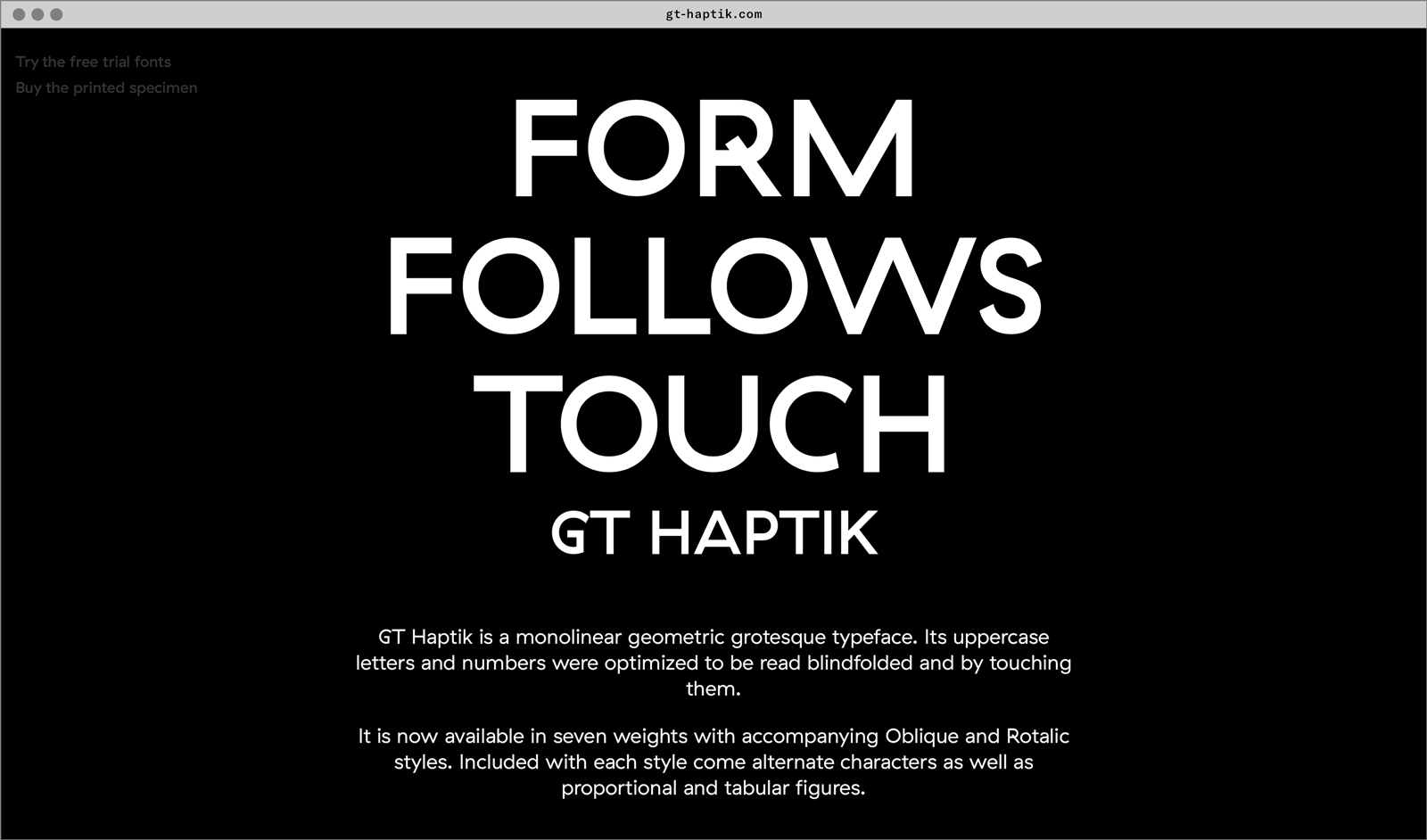
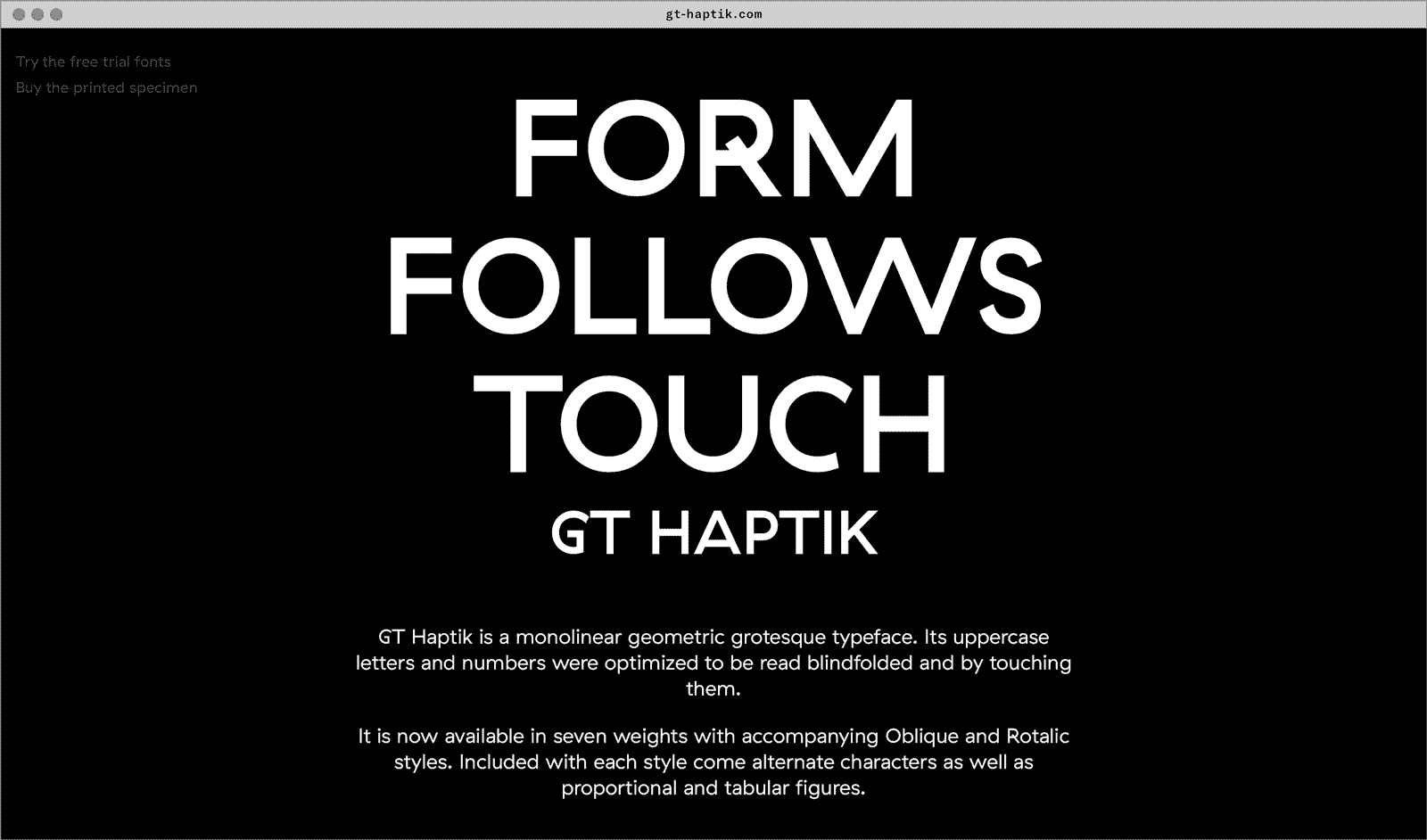
- Visit the GT Haptik minisite to discover more about the typeface family’s history and design concept.
GT Haptik in use
